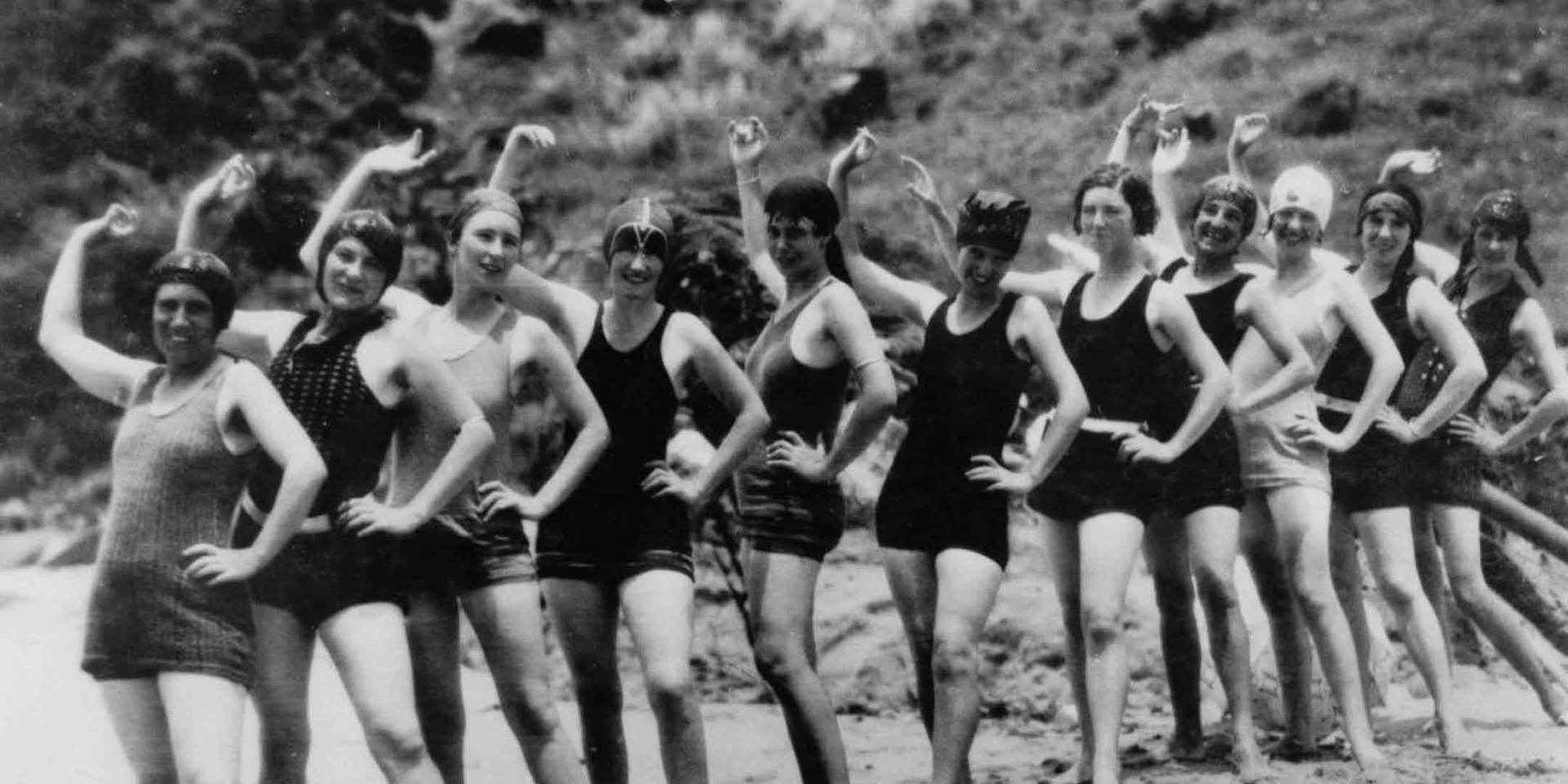
Over two million people visit the Great Barrier Reef region each year, with the coral reef continuing to rank in the top 10 ‘must do before you die’ travel lists. But it was not always so. While early European Queenslanders appreciated the natural beauty of the reef that lay on their doorstep, it was really just for locals. Non-residents saw north Queensland as a remote and difficult location to get to just to indulge in birdwatching, fishing and shell collecting.
But the Great Barrier Reef gained some attention in the early 1890s. In 1893, scientist William Saville-Kent published, The Great Barrier Reef of Australia: Its products and potentialities, generating international interest from a commercial perspective. It featured pages of techniques for pearling and oyster cultivation, discussing the viability of those industries as potential business ventures. But it was the drawings of the unusual coral and reef fish, hand painted with bright colours that captured the wider imagination.
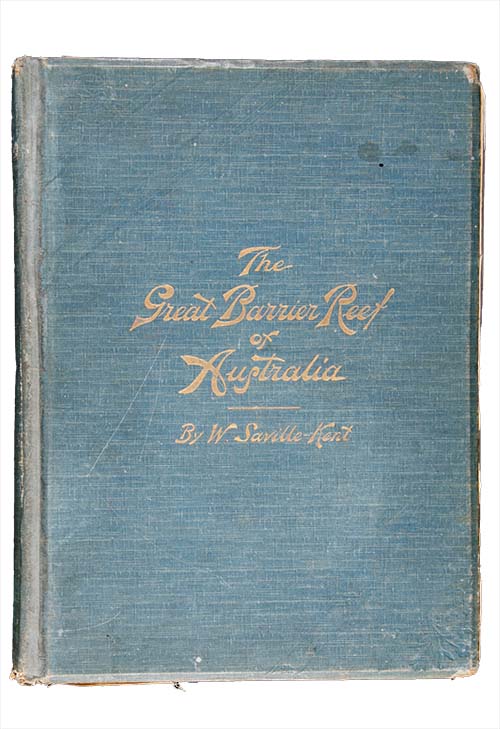
Front cover of William Saville-Kent's 1893 book, The Great Barrier Reef of Australia. ANMM Collection, 00044205
Saville-Kent’s book also stirred the scientific community and in 1928 a yearlong expedition was lead by British marine biologist, Sir Charles Yonge to officially study the Great Barrier Reef. Yonge’s team spent a challenging year living on Low Isles, off Port Douglas. In addition to exhaustive findings published in scientific journals, Yonge produced a supplementary book for the public, A Year On the Great Barrier Reef, which included an impressive 70 photographs. The interest in his images and firsthand account of living on the reef, encouraged the idea of larger-scale organised reef tourism. At the end of 1928 schoolteacher Monty Embury from Cumbalum, New South Wales, organised a holiday expedition to the reef especially for teachers and friends.
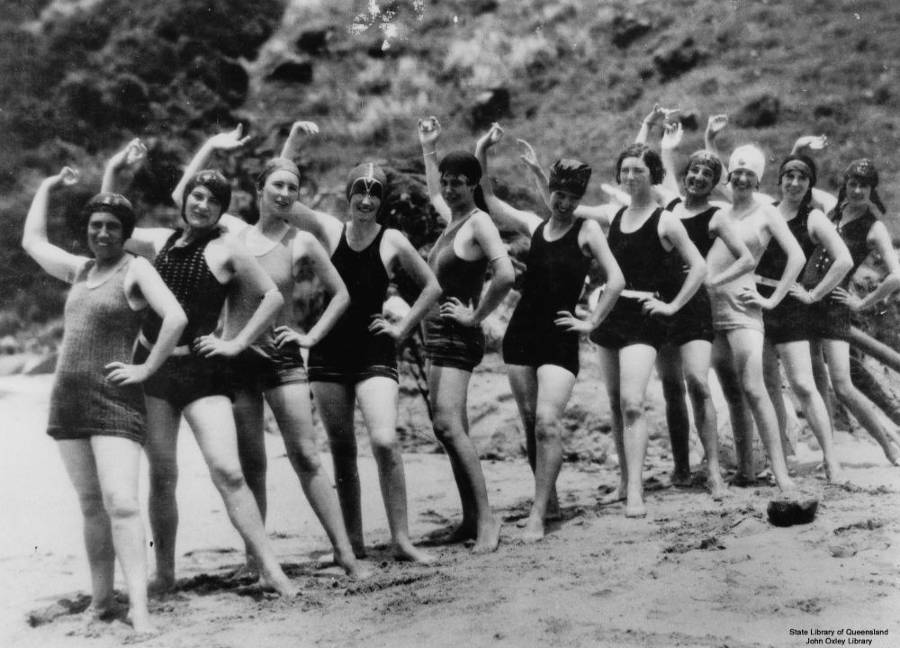
Formality is thrown to the winds! Members of the Embury Expedition on the beach at Lindeman Island, Queensland, Christmas 1928. John Oxley Library, State Library of Queensland
A farming family on Lindeman Island in Queensland, had already recognised the potential for holiday makers. Happy to share in Embury’s venture, the Nicholsons made their woolshed available to these early intrepid joy seekers as a cookhouse and supplied them with launches to explore outer islands. There was no electricity or running water, accommodation was in tents and everything the group required had to be brought in. But these privations did not stop 110 people heading north by bus and train – which was an adventure in itself in 1928 – to become the first large tour group to the Great Barrier Reef.
The advertisement by Monty Embury for that first expedition promised:1
Torres Strait Island pigeons will be nesting in their thousands near Lindeman Island. Anyone interested in photography, marine and reef life, corals and shells, angling … turtles, beachcombers, crustaceans, exposed granite islands, jungle covered, bower and birds of paradise, jungle birds and fruit pigeons, orchids and ferns, jungle botany and entomology, is asked to write to the organiser.
The trip was a combination of holiday and discovery. It was comprised largely of teachers, their friends and scientists such as Melbourne Ward from the Australian Museum. Side-by side these two groups spent a month exploring and documenting the reef, fishing and shooting. The nights included more traditional holiday activities such as fancy dress ‘balls’ and games – there was even an entertainment committee. It was by no means ‘glamping’ but it was agreed at the end that everyone had coped well:2
There was no distinction between old and young, rich and poor, all worked together. What one was prepared to submit to, the others were … One could scarcely imagine people who were used to every comfort, food dished up in dainty fashion, and probably never even saw camp life, to go through this camp life as they did. The women were just wonderful; no complaints either with the conditions or the food, and they agreed that they enjoyed every day in camp.
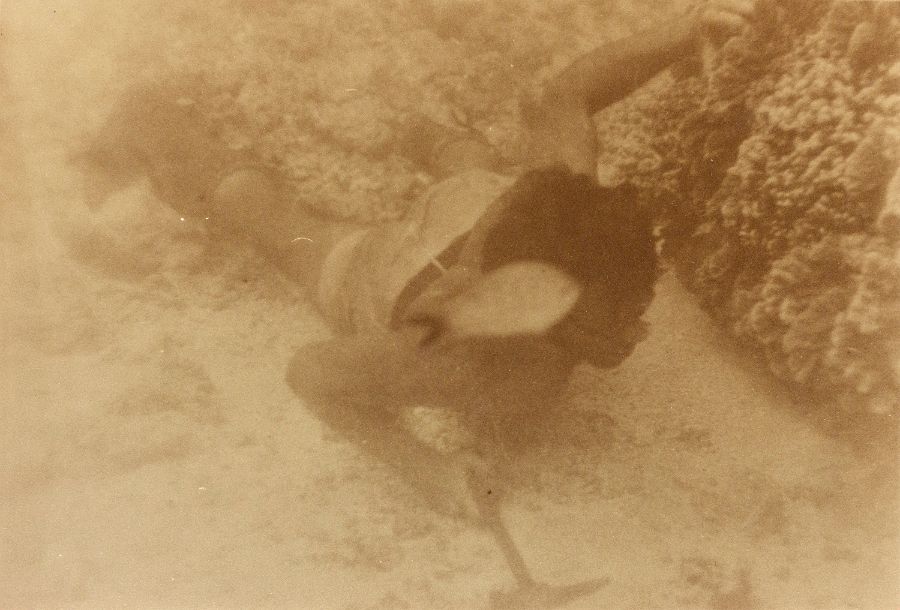
This photograph may be the earliest underwater image of the reef. It shows marine scientist Mel Ward diving, who led scientific excursions and gave lectures. Image courtesy State Library of Queensland
This inaugural Embury Expedition was memorable in a number of ways. It signalled the viability of large scale tourism to the region and importantly captured the first underwater photographs of the Great Barrier Reef, taken by Otto Webb and Arch Embury. Here at last was the secret world that existed beneath the water.
By 1932 the Embury Expeditions were popular trips with travellers looking to enjoy the reef in an informal ‘gypsy life experience’. But Embury’s initial foundation of combining scientific understanding with a holiday atmosphere remained at the core of the tours. There was the allure of having:3
... informality thrown to the winds, all the artificialities of the daily round are forgotten, Christian names and friendly fellowship are part of an atmosphere of delicious freedom, from which no normal person could stand apart.
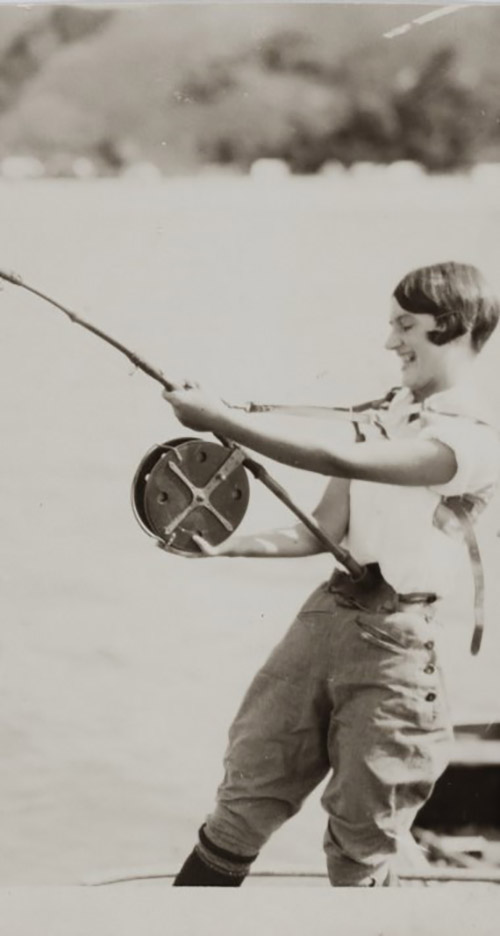
Cora Dunphy fishing on Lindeman Island 1928. Cora was one of the lucky members of the first Embury Expedition to the Great Barrier Reef. Image courtesy John Oxley Library, State Library of Queensland
Yet each of these holidaymakers embraced the opportunity to learn about the reef alongside trained scientists. This unique experience was seen as being equally exciting as camping on the beach or the special burlesque evenings:4
The beauty of this particular expedition is that some three or four scientists accompany it … These brilliant men are at your service, and at night by the flickering lamplight they give informal, but informative lectures on the subjects you are studying first hand.
With the advent of helicopters, super yachts and resorts, what would Embury and those plucky travellers make of tourism to the Great Barrier Reef today? No doubt they might appreciate the running water, cold drinks and clean sheets, but they would likely miss the sharing of knowledge and understanding that took place on those long days on the water. The discussions and excitement as fellow travellers found something not seen before, rushing to the nearest scientist for a debrief.
While I would not necessarily advocate a holiday back in the woolshed, I do think modern holidays at the Great Barrier Reef would be enhanced by a good dose of the Embury approach. The balance he struck between relaxation and education was fun, informative and by all accounts, life changing.
References
[1] 15 August 1928, Education, Journal of the N.S.W. Public School Teachers Federation, Vol 9 No 10.
[2] Northern Star, 13 February 1929, p 5.
[3] The Land, 10 June 1932, p 7.
[4] Ibid.
